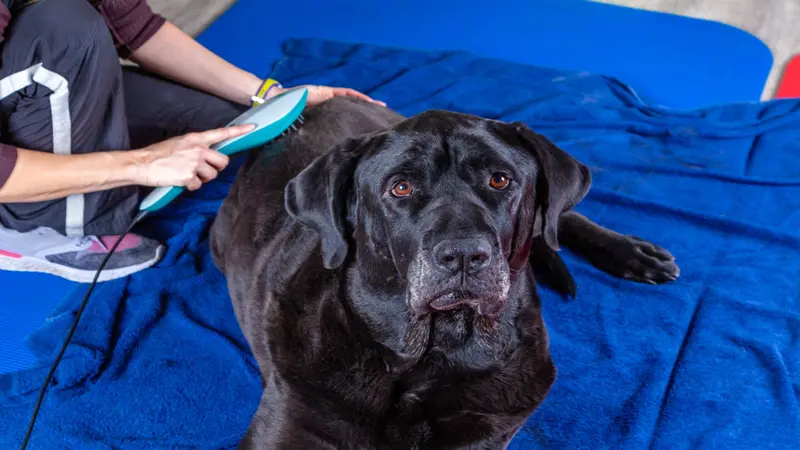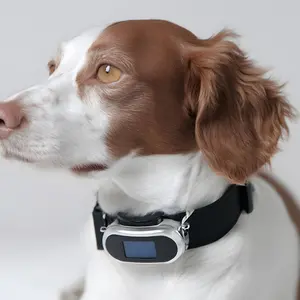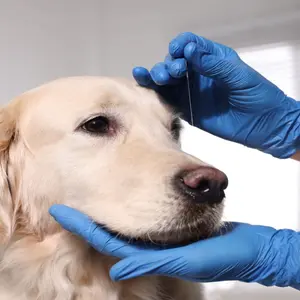
Natural Pets
Natural Pets
Photobiomodulation Therapy for Dogs
Photobiomodulation therapy (PBMT), also known as laser therapy, is an increasingly popular treatment used to support healing and relieve pain in companion animals. The therapy is noninvasive, painless, and easily performed in a veterinary setting. It uses specific wavelengths of light to stimulate cellular activity and promote tissue repair. Around 20 percent of veterinary practices in North America now use therapeutic laser devices.
PBMT works by delivering light energy to the body’s cells. This light is absorbed by cellular light-receptors called chromophores, triggering a cascade of beneficial biological effects. These include increased production of adenosine triphosphate (ATP), the energy currency of the cell, and the release of nitric oxide, which supports blood flow and reduces inflammation. Reactive oxygen species (ROS) are also produced, activating the body’s antioxidant defenses and aiding repair. The result is faster healing, reduced pain and less swelling.
In dogs, PBMT is often used to treat joint diseases such as osteoarthritis, cruciate ligament injuries, and other musculoskeletal problems. Research shows that PBMT decreases inflammatory molecules, while increasing the production of anti-inflammatory and growth-promoting factors. It also reduces chemical messengers associated with pain. These combined effects relieve pain, reduce inflammation, improve joint mobility, and support tissue repair.
Laser therapy can also strengthen tendons and ligaments by increasing collagen production and improving tissue resilience. PBMT has also been shown to reduce cartilage damage and accelerate recovery after orthopedic surgeries.
The effectiveness of PBMT depends on several factors, including the wavelength of light used, the dose delivered, and the area being treated. Wavelengths between 800 and 1000 nanometers penetrate deeply enough to reach most joints. Treatments are usually started frequently, often daily for acute conditions, and then spaced out as symptoms improve. Most dogs begin to show improvement after four to six sessions, though more may be needed for chronic or severe issues.
When performed correctly, PBMT is safe for most patients. Dogs should wear protective eyewear during treatment, and lasers should never be directed over tumors or pregnant areas. With proper use, PBMT can reduce discomfort and help dogs regain mobility while minimizing reliance on pain medications.
REFERENCES
Pryor B, Millis DL. Therapeutic laser in veterinary medicine. Vet Clin North Am Small Anim Pract 2015;45(1):45-56.
Chung H, Dai T, Sharma SK, et al. The nuts and bolts of low-level laser (light) therapy. Ann Biomed Eng 2012;40(2):516-533. Anders JJ, Lanzafame RJ, Arany PR. Low-level light/laser therapy versus photobiomodulation therapy. Photomed Laser Surg 2015;33(4):183-184.
Lubart R, Eichler M, Lavi R, et al. Low-energy laser irradiation promotes cellular redox activity. Photomed Laser Surg 2005;23:3-9.
Prindeze NJ, Moffatt LT, Shupp JW. Mechanisms of action for light therapy: a review of molecular interactions. Exp Biol Med (Maywood, NJ) 2012;237:1241-1248.
Miller LA. Musculoskeletal disorders and osteoarthritis. In: Reigel RJ and Godbold JC Jr., eds. Laser Therapy in Veterinary Medicine: Photobiomodulation. Ames, IA: John Wiley and Sons; 2017:132-149.
Hochman L. Photobiomodulation therapy in veterinary medicine: a review. Top Companion Anim Med 2018;33(3):83-88.
Riegel RJ, Godbold JC Jr. Fundamental information. In: Riegel RJ and Godbold JC Jr., eds. Laser Therapy in Veterinary Medicine: Photobiomodulation. Ames, IA: John Wiley and Sons; 2017:9-18.
Looney AL, Huntingford JL, Blaeser LL, Mann S. A randomized blind placebo-controlled trial investigating the effects of photobiomodulation therapy (PBMT) on canine elbow osteoarthritis. Can Vet J 2018;59(9):959-966.


 By
By







